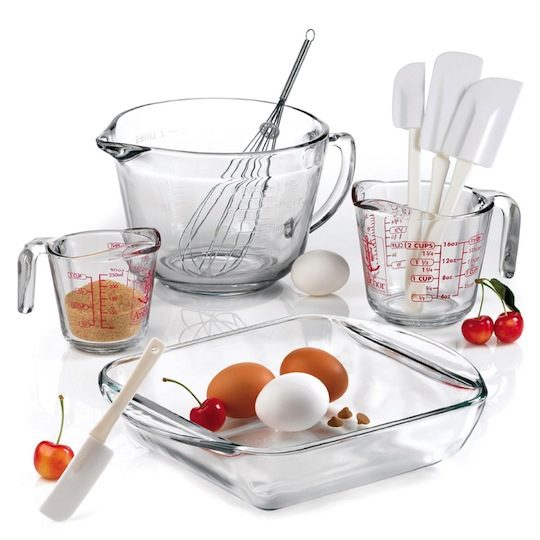You have certainly noted that all of the recipes on this blog can be measured with the help of cups and spoons, though most of the time we offer weights and volume in imperial and decimal systems. We think it might be easier for you to have various metrics you can refer to. A lot of experienced cooks measure everything by gauging at sight (except when baking), and though we wouldn’t encourage to neglect the recipes, you’ll get there with practicing again and again.
Think about this for a start: does it really matter whether your stir-fry has a big cup or a tiny cup of chopped carrots?
But sometimes measuring is really important, for example, measurement are mandatory in baking and pastry. Check this measuring tools list if you’re not convinced… are they totally useless? You bet no! Whenever you bake bread, make quick desserts, or work with eggs, soufflés, custards and more, you have to measure your ingredients carefully.
Here are few tips to help you better measure your liquid and dry ingredients.
1. How to measure liquid ingredients
For liquids, you have to use specific measuring cups, since to get an accurate reading you would finish by overfilling a dry cup and having a trouble. Then bring the cup at eye level without making waves (or squat down to the cup on the countertop), to check your measuring. The surface tension makes the liquid look concave toward the edges of the container, and the bottom “line” of that bubble should be inline with the mark on the cup. Then add or remove some liquid until it is even with the mark. It’s a bit tricky to do this all the time but it worth the effort at the end.
2. How to measure dry ingredients
Dry ingredients include flours, grain, rice, pasta, chopped vegetables, dried fruit and more… Everything that not countable. Use a measuring cup to scoop up your ingredient, with a bit more than the cup can allow it. You can also fill the cup with a spoon. Then use the flat side of a knife or a spatula to remove the excess ingredient back into its container.
And what about measuring spoons?
You can use the same set of measuring spoons for both dry and liquid ingredients. For dry ingredients, use the same method above.
Any advices about the measuring equipment?
You find find a useful list of measuring tools for your kitchen here.


